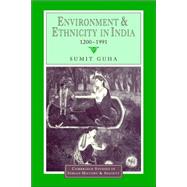
Note: Supplemental materials are not guaranteed with Rental or Used book purchases.
Purchase Benefits
What is included with this book?
| 'Rama, Sita and Lukshmana in the forest' | |||||
| List of maps | x | ||||
| List of tables | x | ||||
| Acknowledgements | xi | ||||
| Glossary | xiv | ||||
| List of abbreviations | xv | ||||
| Introduction | 1 | (9) | |||
| 1 From the archaeology of mind to the archaeology of matter | 10 | (20) | |||
|
10 | (1) | |||
|
11 | (4) | |||
|
15 | (6) | |||
|
21 | (1) | |||
|
22 | (8) | |||
| 2 Subsistence and predation at the margins of cultivation | 30 | (32) | |||
|
30 | (1) | |||
|
30 | (10) | |||
|
40 | (3) | |||
|
43 | (3) | |||
|
46 | (3) | |||
|
49 | (3) | |||
|
52 | (3) | |||
|
55 | (7) | |||
| 3 State formation in the highland forests 1350-1800 | 62 | (21) | |||
|
62 | (2) | |||
|
64 | (6) | |||
|
70 | (4) | |||
|
74 | (6) | |||
|
80 | (3) | |||
| 4 The peoples of the Sahyadri under Marathas and British | 83 | (25) | |||
|
83 | (2) | |||
|
85 | (3) | |||
|
88 | (8) | |||
|
96 | (3) | |||
|
99 | (3) | |||
|
102 | (3) | |||
|
105 | (3) | |||
| 5 The central Indian forest from Mughal suzerainty to British control | 108 | (22) | |||
|
108 | (14) | |||
|
108 | (1) | |||
|
109 | (3) | |||
|
112 | (4) | |||
|
116 | (5) | |||
|
121 | (1) | |||
|
122 | (8) | |||
|
122 | (3) | |||
|
125 | (1) | |||
|
126 | (3) | |||
|
129 | (1) | |||
| 6 The central Indian forest under early British rule | 130 | (20) | |||
|
130 | (1) | |||
|
130 | (3) | |||
|
133 | (3) | |||
|
136 | (2) | |||
|
138 | (4) | |||
|
142 | (3) | |||
|
145 | (5) | |||
| 7 Identities and aspiration – not noble savage but savage noble | 150 | (14) | |||
|
150 | (1) | |||
|
151 | (2) | |||
|
153 | (2) | |||
|
155 | (6) | |||
|
161 | (2) | |||
|
163 | (1) | |||
| 8 The high colonial period and after – new patterns of authority and power | 164 | (18) | |||
|
164 | (1) | |||
|
164 | (5) | |||
|
169 | (3) | |||
|
172 | (10) | |||
| 9 From sanctuaries to safeguards: policies and politics in twentieth-century India | 182 | (17) | |||
|
182 | (3) | |||
|
185 | (2) | |||
|
187 | (7) | |||
|
194 | (4) | |||
|
198 | (1) | |||
| Conclusion | 199 | (3) | |||
| Afterword | 202 | (2) | |||
| Bibliography | 204 | (12) | |||
| Index | 216 |
The New copy of this book will include any supplemental materials advertised. Please check the title of the book to determine if it should include any access cards, study guides, lab manuals, CDs, etc.
The Used, Rental and eBook copies of this book are not guaranteed to include any supplemental materials. Typically, only the book itself is included. This is true even if the title states it includes any access cards, study guides, lab manuals, CDs, etc.